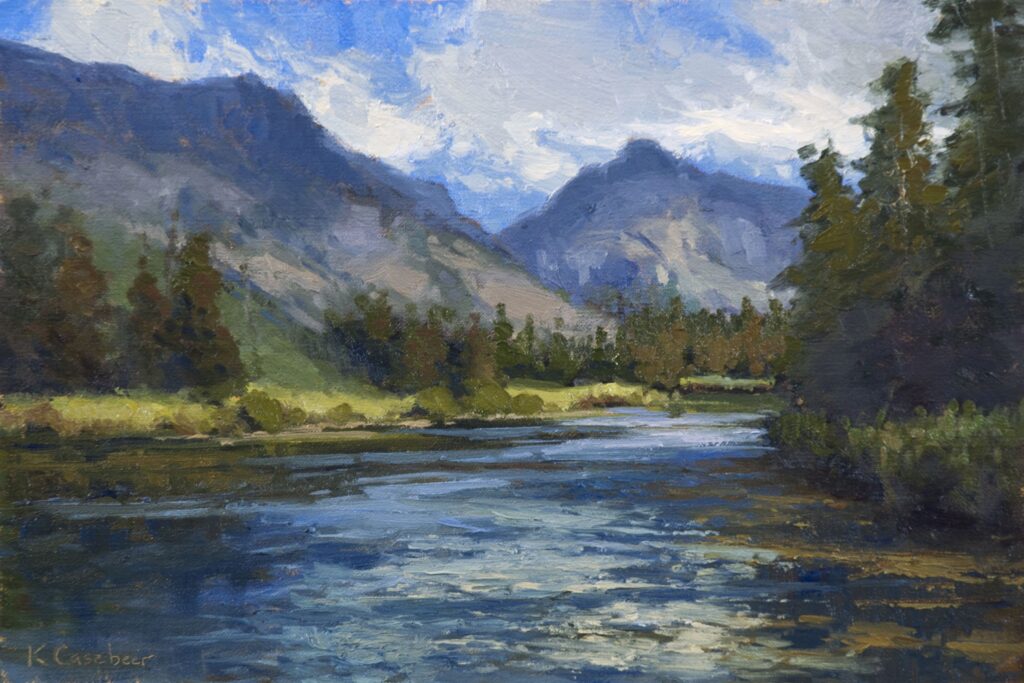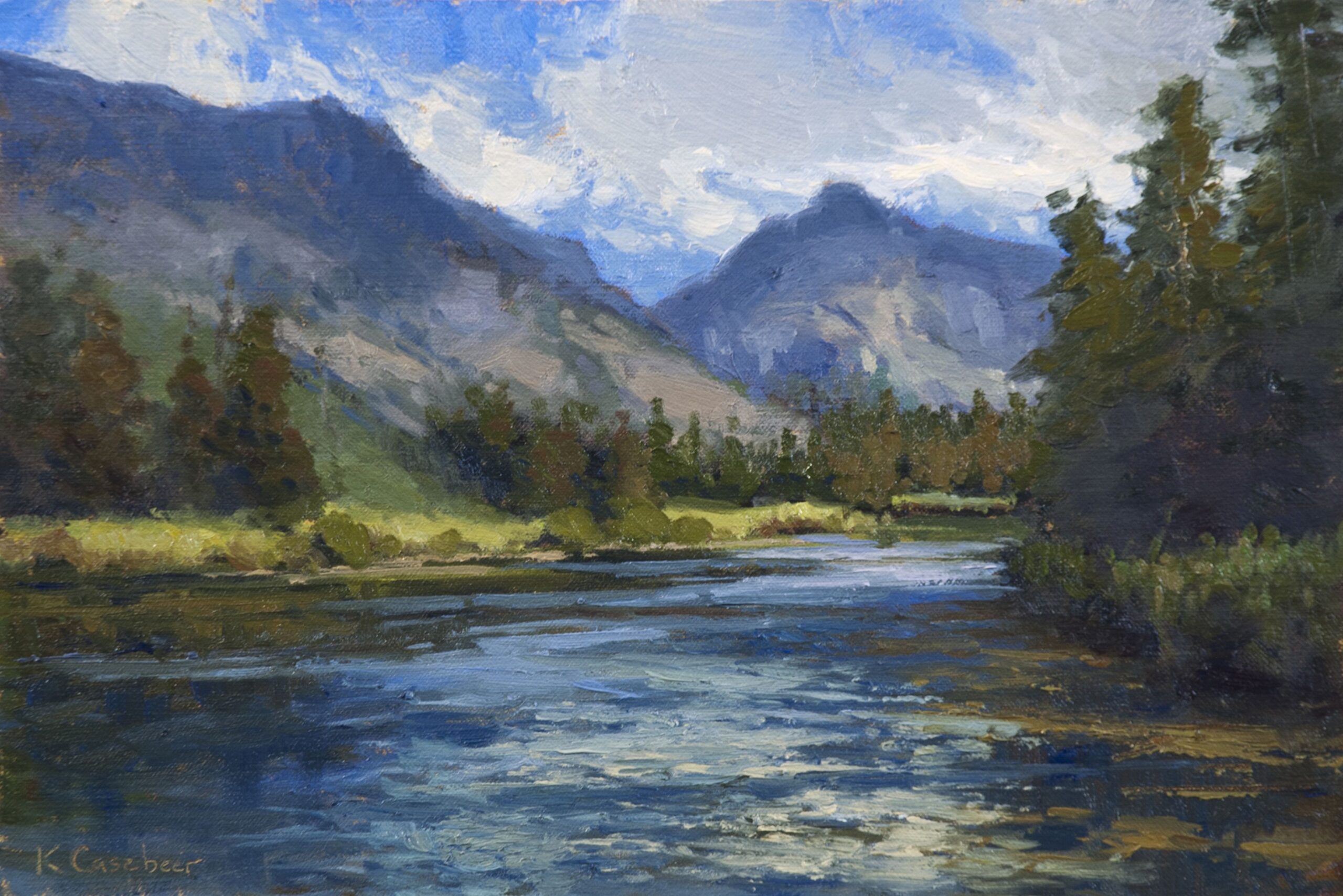
Capturing the Majesty: Exploring Western Landscape Art Through the Ages
Western landscape art holds a profound place in the history of artistic expression, offering a window into the vast and diverse terrains of the American West. From the dramatic peaks of the Rocky Mountains to the sun-drenched deserts of the Southwest, artists have long been captivated by the region’s unique beauty and have sought to capture its essence on canvas. This article will delve into the evolution of western landscape art, exploring its key movements, prominent artists, and enduring appeal.
The Allure of the American West: A Canvas for Artistic Expression
The American West, with its breathtaking vistas and untamed wilderness, presented a unique challenge and opportunity for artists. Unlike the cultivated landscapes of Europe, the West was largely untouched by human hand, offering a sense of raw, untamed beauty. Early explorers and settlers brought with them artists who documented the region’s topography, flora, and fauna. These early depictions, often commissioned by government agencies or private companies, served a practical purpose, providing visual records of the West’s resources and potential. However, they also laid the foundation for a more artistic exploration of the landscape.
The Hudson River School and the Luminists: Eastern Eyes on Western Vistas
While primarily focused on the landscapes of the Eastern United States, the Hudson River School and the Luminist movement had a significant influence on the development of western landscape art. Artists like Albert Bierstadt and Thomas Moran, though trained in the traditions of the Hudson River School, ventured westward, drawn by the grandeur of the Rocky Mountains and the vastness of the plains. Bierstadt’s monumental canvases, such as “The Rocky Mountains, Lander’s Peak,” captured the sublime beauty of the West, often romanticizing the landscape and imbuing it with a sense of awe and wonder. Moran’s paintings of Yellowstone National Park, commissioned by the U.S. government, played a crucial role in the establishment of the park as a protected area. The Luminist movement, with its emphasis on light and atmosphere, also found resonance in the West, as artists sought to capture the ethereal quality of the Western light.
The Taos Society of Artists: A New Perspective on the Southwest
In the early 20th century, a new generation of artists began to explore the landscapes of the Southwest, drawn by its unique culture and stark beauty. The Taos Society of Artists, founded in 1915, played a pivotal role in promoting the art of the region. Artists like Ernest Blumenschein, Bert Geer Phillips, and Joseph Henry Sharp settled in Taos, New Mexico, and dedicated themselves to capturing the essence of the Southwestern landscape and its indigenous cultures. Their paintings often depicted the vibrant colors of the desert, the adobe architecture of the pueblos, and the daily lives of the Native American people. The Taos Society of Artists helped to establish the Southwest as a major center for western landscape art.
Modern and Contemporary Interpretations: Beyond the Romantic Ideal
As the 20th century progressed, western landscape art evolved beyond the romantic ideals of the Hudson River School and the Taos Society of Artists. Modern and contemporary artists began to explore the West in new and challenging ways, often focusing on the impact of human activity on the landscape. Artists like Georgia O’Keeffe, though not strictly a western landscape artist, found inspiration in the stark beauty of the New Mexico desert, creating iconic paintings of bleached bones and minimalist landscapes. Others, like Maynard Dixon, depicted the harsh realities of life in the West, capturing the struggles of ranchers and miners. Contemporary artists continue to grapple with the complex issues facing the West, including environmental degradation, urbanization, and the changing relationship between humans and nature. They use a variety of mediums, including painting, sculpture, photography, and installation art, to express their perspectives on the Western landscape.
The Enduring Appeal of Western Landscape Art
Despite the changing styles and perspectives, western landscape art continues to hold a powerful appeal for audiences around the world. Its enduring popularity stems from its ability to capture the grandeur and beauty of the American West, while also exploring the complex relationship between humans and the natural world. Whether it is the sweeping vistas of Bierstadt’s monumental canvases or the intimate details of O’Keeffe’s desert landscapes, western landscape art offers a glimpse into the soul of the American West. The art serves as a reminder of the importance of preserving the natural environment and celebrating the diverse cultures that have shaped the region.
Collecting Western Landscape Art: A Guide for Enthusiasts
For those interested in collecting western landscape art, there are several factors to consider. First, it is important to research the different periods and styles of western landscape art, from the early depictions of the Hudson River School to the contemporary interpretations of modern artists. Familiarize yourself with the work of prominent artists and learn about their techniques and influences. Second, consider your budget and collecting goals. Are you interested in acquiring museum-quality pieces or are you looking for affordable prints and reproductions? Third, visit galleries and museums that specialize in western landscape art. This will give you the opportunity to see the art in person and to learn more about the market. Finally, consult with art experts and appraisers to ensure that you are making informed investment decisions. Collecting western landscape art can be a rewarding experience, allowing you to connect with the beauty and history of the American West.
Preserving the Legacy: The Future of Western Landscape Art
The future of western landscape art depends on our ability to preserve the natural environment and to support the artists who are working to capture its beauty and complexity. As the West faces increasing challenges from climate change, urbanization, and resource extraction, it is more important than ever to protect its unique landscapes and to celebrate its rich artistic heritage. By supporting museums, galleries, and educational programs, we can ensure that future generations will have the opportunity to experience the power and beauty of western landscape art. Furthermore, encouraging contemporary artists to engage with the West’s evolving narrative will ensure the art form remains relevant and impactful. The story of the West is constantly being rewritten, and its artists are uniquely positioned to document and interpret these changes.
The Role of Photography in Western Landscape Art
While painting has historically been a dominant medium, photography has played an increasingly important role in shaping our perception of the western landscape. From the early documentary photographs of Carleton Watkins and Timothy O’Sullivan to the contemporary works of Ansel Adams and Edward Weston, photographers have captured the grandeur and intimacy of the West with stunning clarity. Their images have not only influenced painters but have also helped to raise awareness about the importance of preserving the region’s natural resources. The accessibility of photography has also democratized the art form, allowing more people to participate in capturing and sharing their own perspectives on the Western landscape.
The Influence of Indigenous Perspectives on Western Landscape Art
It is crucial to acknowledge the influence of Indigenous perspectives on western landscape art. For centuries, Native American artists have been creating art that reflects their deep connection to the land. While their work has often been overlooked or marginalized in mainstream art history, it is essential to recognize their contributions and to incorporate their perspectives into our understanding of the Western landscape. Contemporary Indigenous artists are reclaiming their narratives and challenging the dominant representations of the West, offering new and powerful insights into the region’s history and culture. Their art often addresses issues of environmental justice, cultural preservation, and the ongoing struggle for Indigenous rights.
Conclusion: A Timeless Fascination with the Western Landscape
Western landscape art remains a vibrant and evolving art form, reflecting our ongoing fascination with the American West. From the romantic visions of the 19th century to the contemporary explorations of modern artists, western landscape art continues to inspire and challenge us. By studying its history, supporting its artists, and preserving its landscapes, we can ensure that future generations will have the opportunity to experience the power and beauty of this unique art form. The enduring legacy of western landscape art lies in its ability to capture not only the physical beauty of the West but also its spirit of adventure, resilience, and connection to the natural world. [See also: Contemporary Western Art], [See also: History of Landscape Painting], [See also: Art of the American Southwest]

